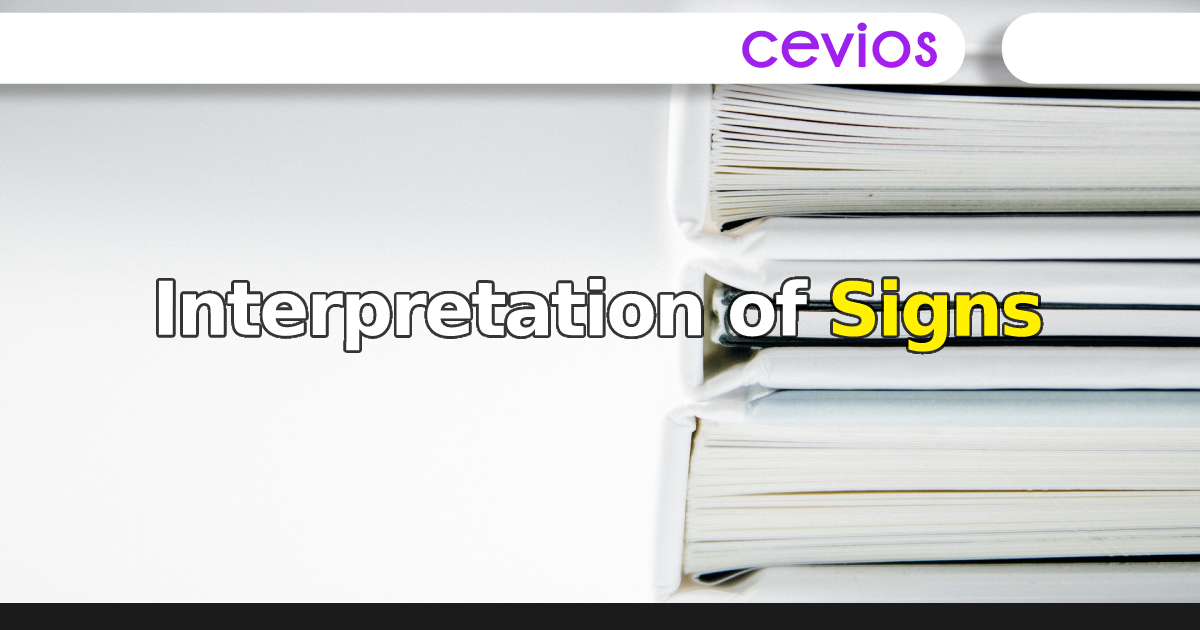Interpretation of Signs
Understanding texts requires a lot of knowledge about the world: According to Teun Van Dijk, the text is only the apparent part, like an iceberg, a vast amount of knowledge is in the mind[1].
In the following lines, we will shed light on some aspects that come into play while interpreting texts. The goal is to draw attention to some tools that interest text/discourse analysts.
1. Context
To interpret texts, humans need a body of knowledge and a lot of competencies: linguistic, cultural, logical, of common sense, etc.
By relying on them, they can directly infer the meaning from context. This also means that the meaning found in the dictionaries is insufficient.
According to Dominique Maingueneau (Analyser les textes de communication, p.14-17), there are many types of contexts.
1.1 Co-text
One of the most important elements for text comprehension is co-text. It refers to anything that surrounds the unit that one wants to interpret.
Example: OSS 117 walks nonchalantly towards the bar. This room is a non-smoking area[2].
We cannot understand the meaning of « This room » without reading the elements that surround it: In this case, the word that clarifies its meaning precedes it: « the bar ».
1.2 Physical Environment / Situational Context
As the name suggests, the physical environment constitutes the physical objects that surround communication, as well as the time and space in which it takes place.
Statements like “Look at this” or “See you tonight” are only clearly defined by physical objects, as well as the time and space in which they are produced.
1.3 The Role of Memory
The role of memory in the processes of interpretation is multiple: Not only does it store and organize information that the person has about the world, but it also retrieves what is relevant each time he needs it while interacting with texts.
Example: OSS117 takes out his pack of cigarettes, leaves the living room, and goes to the bar. This room is a non-smoking area: he must return to the living room[3].
Without expecting the underlined statements to tell us the whole story, thanks to our memory and our knowledge about the world, we can understand, for instance, that he wants to smoke, that tobacco is dangerous for health, and that in public areas, it is forbidden to smoke, so he must find a smoking area.
2. Speech Acts
The proposition “This room is a non-smoking area”[4] — in a sign at the entrance of a room — is not a mere statement, it is an interdiction.
It is a speech act in the right place, having, as a result, an effect on the world.
3. The Implicit
The implicit is generally anything that is hidden from view. Humans do not behave like robots; they do not need to be informed of everything with details to understand messages. They can achieve it with their varied knowledge: Consequently, the implicit allows economy at the explicit level.
The implicit is divided into two categories: presuppositions and implicatures.
3.1 Presuppositions
Presuppositions are the type of implicit that we can directly deduce from what’s written.
Example: Paul no longer smokes in the waiting room[5].
We may deduce two propositions from it:
– That Paul is a smoker.
– That Paul smoke in the waiting room.
The author of such a proposition cannot deny the information communicated above.
3.2 Implicatures
Contrary to presuppositions, implicatures are the product of the knowledge and values of each person.
The same example may give birth to multiple propositions like:
– Smoking is dangerous for health.
– The waiting room is a public space.
– Public spaces are non-smoking areas.
The speaker in this case can deny having communicated the inferred information, and notably in the event of misunderstandings.
3. Different Competencies
Inferences and deductions that lead to the meaning of statements are based on knowledge of each person/group of persons. These differences spotlight the idea of different competencies.
3.1 Linguistic Competencies
Linguistic competencies are related to linguistic levels (6.1.2.2 Linguistic Levels): To produce and understand texts, humans must learn how language organizes its sounds, words, sentences, and their literal meaning.
However, with pure linguistic competencies alone, one cannot communicate effectively.
The example of the robot by the psycholinguist Steven Pinker (Steven Pinker, 46:18) explains how its lack of the pragmatic aspect of language leads it to understand the statement «Give me a hand[6]» literally by responding to the query by detaching and giving his hand to the solicitant.
3.2 Communicative Competencies
To produce and understand statements effectively, in addition to linguistic competencies, it is necessary to master the pragmatic aspect of language: In other words, having the ability to produce and interpret statements in varied contexts.
The correct understanding of the statement « Give me a hand » is a good example.
3.3 Encyclopedic Competencies
Understanding texts also require the possession of a large amount of knowledge about the world. The comprehension of the world of politics, for instance, would be difficult without knowing its bases, actors, evolution, relation to society and history…, etc.
The formula is the more knowledge and competencies the person has, the better his production/interpretation.
[1] Cf. (Khettab, Sid Ahmed. “How Has Teun Van Dijk Come to Discourse and Knowledge?,” 2019. https://doi.org/10.13140/RG.2.2.14158.28485.)
[2] The example is extracted from (Maingueneau, Analyser les textes de communication, p.14)
[3] The example is extracted from (ibid.)
[4] The example is extracted from (ibid.)
[5] The example is extracted from (ibid.)
[6] Literal meaning → “Give me your hand.”
Pragmatic meaning → “Help me.”
“Interpretation of signs” is part of:
Khettab, Sid Ahmed. Semiotics and Semiology: From Sign to Semiosis and From Code to Discourse [Course]. 2021. DOI.org (Datacite), https://doi.org/10.13140/RG.2.2.23509.55520. [Online Article]
KHETTAB, Sid Ahmed. Semiotics and Semiology: From Sign to Semiosis and From Code to Discourse. Independently published, 2021, https://www.amazon.com/Semiotics-Semiology-Sign-Semiosis-Discourse/dp/B0959N6111. [Paperback]

